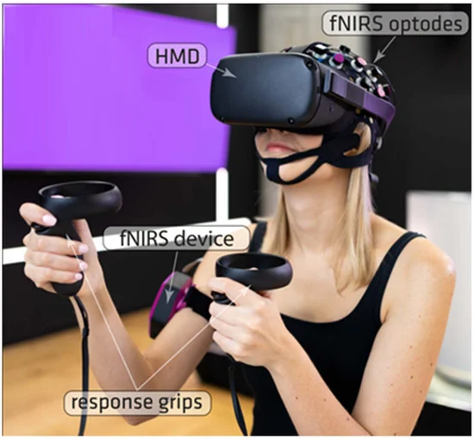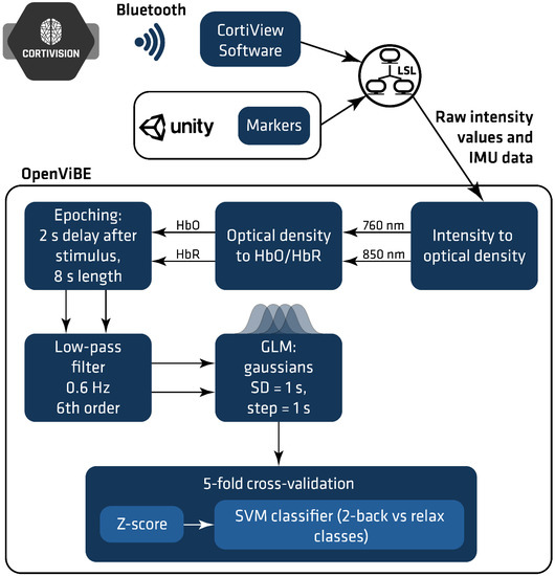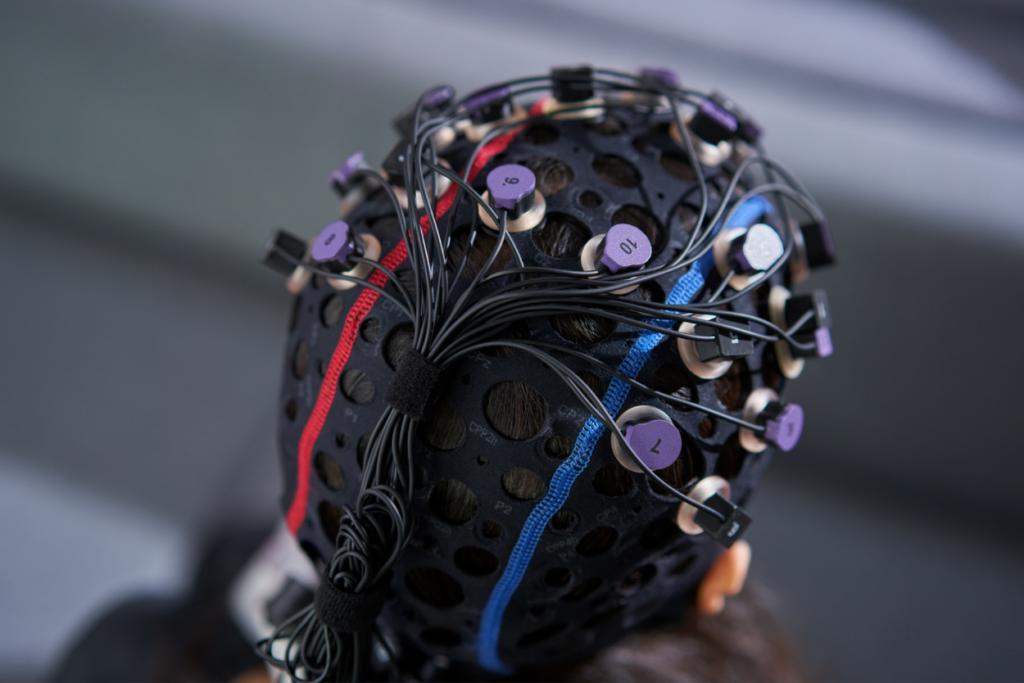Publication on fNIRS + VR integration from Cortivision
In our recent publication (1), we present the results of an evaluation study of Cortivision Photon Cap Spotlight system (Figure 1.). We prove that it is possible to use a mobile fNIRS to detect and train attentional states in an attractive VR environment.

Figure 1.
More precisely, we have shown that by using machine learning algorithms, it is possible to discriminate between the enhanced attention engagement (n-back task performance) and the relaxation state based on hemodynamic activity from the two different brain areas (dorsolateral prefrontal cortex- DLFPC and medial frontal gyrus – MFG). Moreover, we have checked a subjective experience of interaction with the system (fNIRS + VR) to find which elements affect various aspects of user satisfaction. Our study shows also that combining fNIRS and head-mounted-display technologies enables the effective transfer of experimental cognitive procedures to a controlled VR environment.
Last but not least, we proposed, a new signal processing pipeline (Figure 2.) in open-source software OpenViBE to provide a universal framework for future fNIRS-BCI and neurofeedback studies.

Figure 2.
This paper was published in a special issue of Sensors journal “Innovations in Cognitive-Assessment-Based Virtual Reality and Augmented Reality Technologies”.
You can find our publication in open access on the journal’s website.
Reference:
1 Zapała, D., Augustynowicz, P., & Tokovarov, M. (2022). Recognition of Attentional States in VR Environment: An fNIRS Study. Sensors, 22(9), 3133. https://doi.org/10.3390/s22093133
